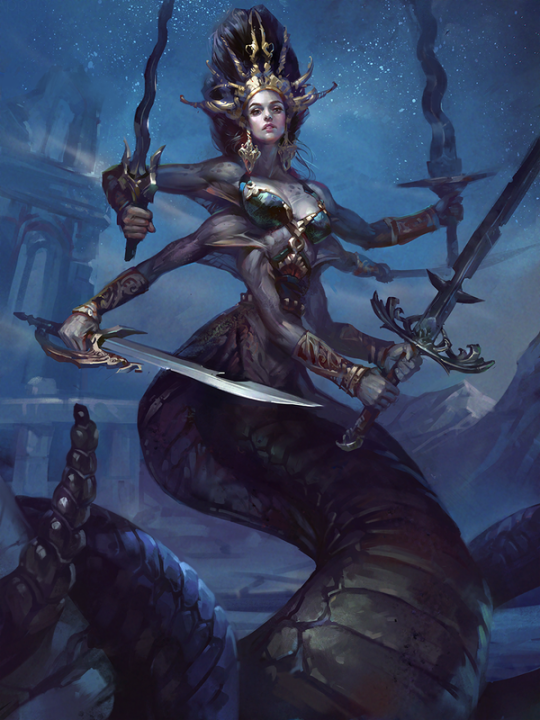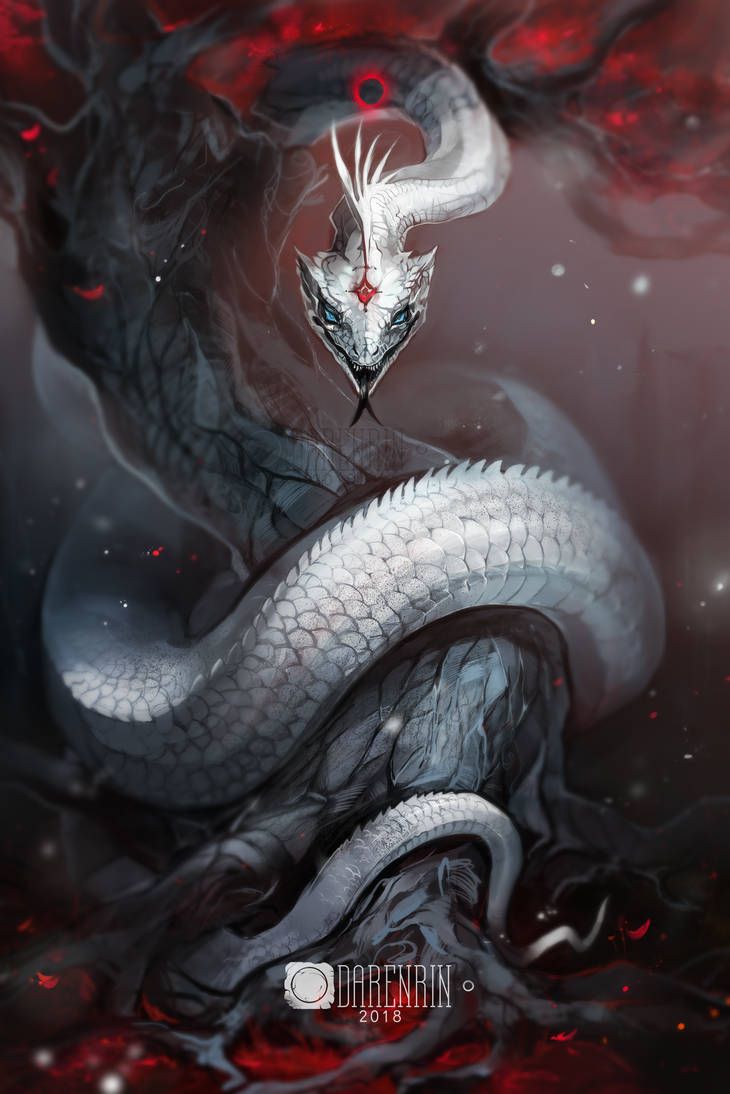
Mythic Origins
Many wereserpents prefer to believe they have their origins in India, being descendants of Lord Vishnu in his aspects as “that which binds the finite to the infinite”. It is entirely more likely that the Wereserpents are the physical descendants of the Nagas, created either to serve the Naga, or as tools for the Naga. Regardless of specifics, the wereserpents believe that part of the reason for their existence is to gather and guard lore relating to Mount Meru and to serve as judges for the rest of the lycanthropes in the world. When the werewolves go on too many rampages, or the local tigers get too violent, the wereserpents believe they have an obligation to act and remove the offending person or persons from the land of the living if the humans or the group is unwilling or unable to remove the offender.
Leadership & Social Structure
A group of wereserpents is commonly called an Ananta, although some modern wereserpents refer to their groups as a Nest rather than by the formal term. An Ananta is led by a male Kashyapa and a female Kadra, who are almost always a mated pair. Ruling in tandem, with neither above the other, the two leaders are collectively referred to as the Sesha and exert total authority over a group of wereserpents.
The Sesha appoints four key roles to support their rule and take on various duties and responsiblities within the Anata:
- Kshatriya - Tasked with enforcing and imposing the will of the Sesha on other serpents, the Kshatriya is also usually the nest's best warrior or fighter and typically serves as the prime guardian of the Sesha.
- The Kshatriya can be assisted in the duties of its rank by the Rajanyas, who are given other assignments or spheres of overlapping responsibility which frees the Kshatriya to serve as guard and guardian.
- Vaishya - Responsible for the maintenance and upkeep of the Ananta’s shared physical space, and other obligations that go along with running a household. They hold the access to and awareness of the Ananta’s physical assets, shared bank accounts and other material goods. It is typically the Vaishya that teaches new serpents about sex and sexuality and how to control their forms during these acts.
- Shudra - Assigns chores and other tasks to the various serpents of the Ananta, and is generally considered to be the trouble-shooter and problem-solver of the group.
- Brahmin (male)/ Kalima (female) - Perhaps the most interesting role in the Anata, the Brahmin and/or Kali are generally not wereserpents but human beings who have magical or psychic gifts, serving as spiritual advisors and providing magical support to the Anata.
- Mahalanka - A role sometimes undertaken which obligates the Brahmin/Kalima to perform dark deeds on behalf of the Anata. The Mahalanka cast curses or use their powers in order to harm instead of heal, operating as mystic assassins and killers, bringing enemies of the nest low. When the Mahalanka speaks, they are capable of overriding commands given by the other ranks within the Ananta, but not the Sesha.
Wereserpents are able to birth offspring like either mammals or reptiles, the choice being up to the parents and partly driven by circumstances.
General Traits & Abilities
Wereserpents embody many traits found in their natural counterparts, possessing such abilities as heat vision, acquatic adaptation, camouflage, and slithering into small spaces. Also like their animal halves, they have a range of protective skills, using their bodies to constrict around a target, inject venom into a foe, or strike at great distances. Where they differ is in not simply using these talents to defend themselves, but rather employing them in their self-prescribed task of judgement and policing other lycan species.
They may appear emotionless and unaffected by the world around them, but in fact they are very attuned to emotions but have the ability to suppress them, willing to set their individual desires aside for the greater good. Reserved and varied in forms, wereserpents are equally feared, misunderstood, and exotic.
